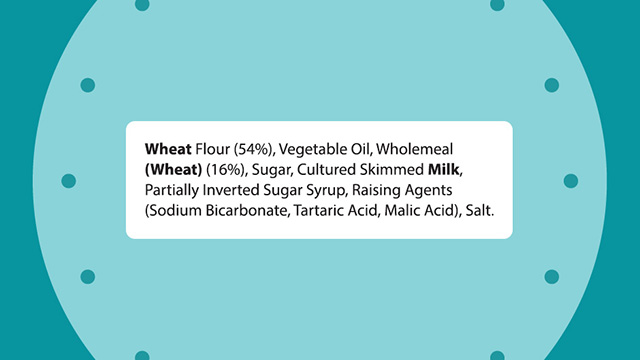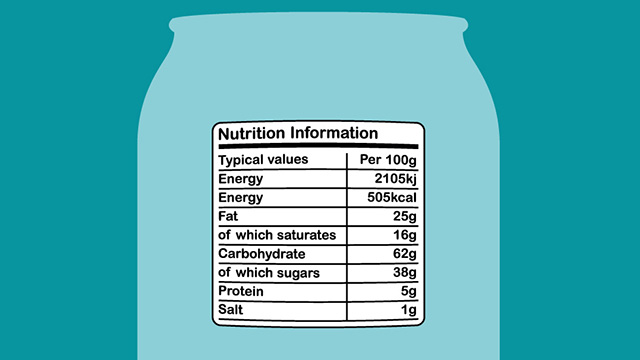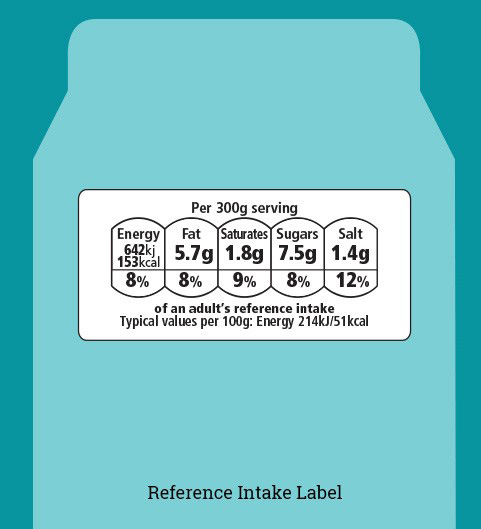FOOD LABELLING
Today, nutritional labelling on pre-packaged food and drinks commercialized in Spain is mandatory under European and Spanish law, with the labels helping you to better understand the nutrient and calorie count of the products you are buying (31, 32).
When it comes to sugars, below you’ll find some useful information about where you find out just how much are in a product.
INGREDIENTS LIST

The first place you may be able to find out whether a product contains sugars is in the ingredients list. All the ingredients that have been used to make the product will be shown in order of weight. If you see ‘sugar’ listed then it is the same type of sugar that you find in your kitchen cupboard (sucrose). There may also be other ingredients that contain sugars such as fruit, fruit juice or other sugar ingredients e.g. glucose, fructose, maltose.
NUTRITIONAL INFORMATION
 The second place you will be able to find out about sugars is on the nutritional information panel. This will be displayed on the back (or side) of pack and will list the major nutrients in a product in a particular order, including energy (both in kilojoules (kJ) and kilocalories (kcal), known as calories), and the amounts of fat, saturated fat (known as saturates), carbohydrates, sugars, protein and salt. Sugars will be listed as carbohydrates (which usually include both starches and sugars) and will use the phrase “of which sugars” to show how much sugars there are per 100g/100ml of product.
The second place you will be able to find out about sugars is on the nutritional information panel. This will be displayed on the back (or side) of pack and will list the major nutrients in a product in a particular order, including energy (both in kilojoules (kJ) and kilocalories (kcal), known as calories), and the amounts of fat, saturated fat (known as saturates), carbohydrates, sugars, protein and salt. Sugars will be listed as carbohydrates (which usually include both starches and sugars) and will use the phrase “of which sugars” to show how much sugars there are per 100g/100ml of product.
FRONT OF PACK LABELLING

The third place where you may be able to find out about sugars is on the front-of-pack where you may find a Reference Intake label. This information is voluntary for food producers.
Reference Intake labels show you the energy (both in kJ and kcals, but most of us know these as calories) per 100g or per 100ml, and the amounts of energy, fat, saturates, sugars and salt in a serving or a portion, along with the % Reference Intake of each nutrient and energy value
IDENTIFYING ‘ADDED SUGARS’
We often get asked as well about identifying ‘added sugars’ (ie. sugars that have been added during food and drink manufacturing). It is not possible to distinguish naturally occurring sugars from added sugars in a laboratory given they are the same molecule. However, some countries are exploring how ‘added sugars’ could be calculated and shown on labels. For example, the US has started to introduce ‘added sugars’ on the labels of pre-packaged food and drink products, and the US Food & Drug Administration (FDA) is continuing to work with manufacturers to meet these new labelling requirements. ‘Added sugars’ are calculated based on product manufacturers’ proprietary recipes as a baseline.
| SUGAR FACTS |
|---|
| There is no such thing as 'hidden sugar'. It must always be declared on the food label. |
| Added sugars (also known as free sugars) are those used in manufacturing or added by the cook or consumer. Naturally occurring sugars are those found naturally in a product e.g. fruit or vegetable |
